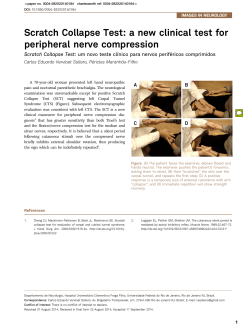
Key Sense Overview
Key Sense Overview Need to know sense organs 1. Skin → touch o Structures o Pathway of impulse to brain 2. Nose → smell o Structures o Pathway of impulse to brain 3. Tongue → taste o Structures o Pathway of impulse to brain The Skin- Cross section Hair Epidermis Blood vessels Sensory Receptor Dermis Hypodermis Fat cells Nerve The Tongue – Cross Section Papillae Taste bud The Nose – Cross Section Pathway of Impulse to brain 1. Sensory receptors pick up stimuli • Skin: Sensory receptors for pain, pressure, touch, and temperature • Tongue: Taste buds • Nose: Cilia 2. Sensory receptor transform stimuli into nerve impulse 3. Sensory nerve send nerve impulse to brain • Skin : Sensory nerve • Tongue: Sensory nerve • Nose: Olfactory nerve Need to know sense organs 4. Ear → balance and sound o Structure of a sound wave o Wave terminology o Structures for balance and sound o Pathway of impulse to brain 5. Eye → sight o Lens o Light movement in plane mirror o Structures for sight o Pathway of impulse to brain o Key vision problems Wave Terminology (Image is transverse wave) Wavelength Amplitude Wave Terminology Crest: Highest point of wave Trough: Lowest point of wave Wavelength: Distance between two crests (one cycle) Amplitude: Half the height of the wave Frequency: Number of cycles per unit time • Higher the frequency, more energy in the wave, higher pitch the sound is The Ear – Cross section (Structures needed in balance) The Ear – Cross section (Structures needed in hearing) Types of lenses Concave / Diverging • Spreads light rays outwards Convex / Converging • Brings light rays inwards Reflection- Image made in plane mirror Image has same dimensions Image is horizontally inverted Object Image The Eye – Cross Section Pathway of Impulse to brain 1. Sensory receptors pick up stimuli • Balance: Cilia in semi-circular canals • Hearing: Cilia in cochlea • Vision: Retina (cones and rod cells) 2. Sensory receptor transform stimuli into nerve impulse 3. Sensory nerve send nerve impulse to brain • Balance: Vestibular nerve • Hearing: Auditory nerve • Vision: Optic nerve The Eye – Vision Problems: Myopia (Nearsightedness) Problem Solution • Distance images are blurry • Image forms before the retina • Concave/Diverging lenses needed to bring image back towards retina The Eye – Vision Problems: Hyperopia (Farsightedness) Problem • Close images are blurry • Image forms after the retina Solution • Convex/Converging lenses needed to bring image forward towards retina The Eye – Vision Problems: Astigmatism Problem • Lens doesn’t bend properly • Images are not focused properly Solution • Specialized lens to focus image properly
© Copyright 2025









